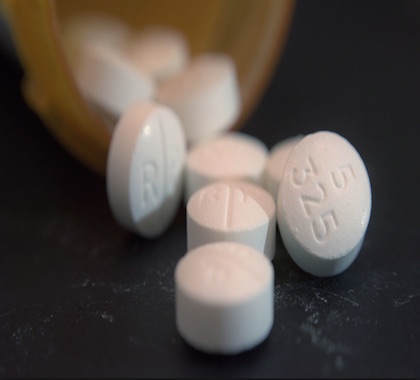The Trump administration is planning to roll out a set of proposals intended to lower the cost of prescription drugs.
During a speech in May, President Donald Trump said he and Health and Human Services (HHS) Secretary Alexander Azar would be announcing a set of proposals meant to lower the cost of prescription drugs. Those proposals, part of the American Patients First Plan, includes four general pillars for helping to lower drug prices without instituting price controls: “improved competition, better negotiation, incentives for lower list prices, and lowering out-of-pocket costs.”
Artificial Price Controls Harm Innovation
Dr. Joel Hay, Professor of Health Economics and Policy at the University of Southern California School of Pharmacy says government-imposed price controls can have the effect of making health care worse, and could stifle innovation.
“We would ultimately be a lot worse off it we did the same thing they do in Canada, or Mexico, or other countries where the government unilaterally chops the price down to much lower levels,” Hay said. “Those countries no longer invent drugs. China doesn’t invent drugs; Russia doesn’t invent drugs; India doesn’t invent drugs. Western Europe used to invent a lot more drugs, but now that European prices are so low, they don’t invent very many drugs either.”
“As a result, those countries don’t pay the enormous amount of money it costs to develop new drugs. They wait until the United States pays for it, then negotiate a lower price,” Hay said. “But if we are to lower our prices to those of the rest of the world, the amount of investment in biomedical R&D would plummet.”
Drug Imports Won’t Help
Hay says even if other countries were developing more drugs, allowing prescription drug imports will not help to lower drug prices because there’s still the problem of manufacturers maximizing profits through price controls.
“Importing drugs doesn’t solve any of the problems, either. It’s really no different than setting price controls,” Hay said. “If the United States wants to set price controls for branded pharmaceuticals, then the manufacturers will say, ‘Okay. If you want us to have a single price in the US, Canada, and everywhere else, then we’ll use the US price because that’s where we make most of our profits.'”
Drug Prices Just A Symptom
Dr. Wayne Winegarden, a fellow at the Pacific Research Institute, says that because drug pricing has shifted away from a market-based cost control system, there is no longer a “consumer” who can effectively control costs, a situation that is exacerbated by the complicated pricing structure of prescription drugs. Winegarden says simplifying the pricing structure and eliminating middlemen could help.
“There is no market, there is no effective consumer.” Winegarden said. “70-80% of drug costs used to be paid by the consumer. That has significantly declined, so you no longer have an effective consumer. Additionally, we have a very complicated pricing scheme for pharmaceuticals. We have to reform how we pay for medicine so we can bring the consumer back. That would eliminate some of the pharmacy benefit managers, who are the middlemen right now in charge of managing formularies for the insurance companies. Those middlemen negotiate with drug companies and suck up a lot of the savings that could be going to consumers.”
Roadblocks By FDA
Hay says the slow Federal Drug Administration (FDA) approval process also inhibits competition.
“One of the reasons we often see spikes in generic drug prices is because the FDA does not have enough inspectors to go out and evaluate all the manufacturing plants.” Hay said. “They’re not allowed to produce new drugs until they get the good manufacturing compliance certification from the FDA, and that can take months or even years.”




